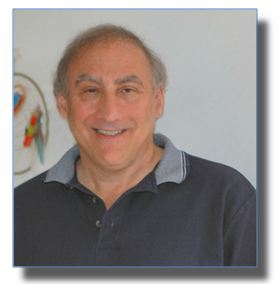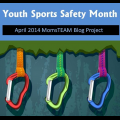In recognition of April as National Youth Sports Safety Month, MomsTeam has asked 30 experts to write a blog answering two questions: first, how or why did they get into their field, and second, how have they made a difference in the life of a youth athlete in the past year.
Today, we hear from Paul Bearmon, a physician in Minnesota and founder of KEAP (Keep 'Em All Playing).
Paul H. Bearmon, MD
Why did I get into my field?
I am a physician and work in an ER type setting, where I see the impact of
overuse injuries, unrealistic schedules, family stress, and, at times,
serious sports-related head injuries. Working in this setting, I have the opportunity to talk
to parents about these issues and see how easy it is for them to become obsessed with
kid's sports, and how important it can be for both the child and family
that sport be put in perspective. I put strict limits on how soon
children can return to activity after head trauma, and I don't clear
significant overuse injuries for return (often the reason for the visit) until a sports professional has seen the child. 
In 2003, while attending one of my son's first community baseball games, was the first time I heard the term "travel team." I had asked one of the other parents why some kids were always playing infield and others outfield. Her answer was that the "infield" kids were the "travel" kids; they not only played in the rec league but also played on the town's travel team. I learned two of the "infield" kids were sons of the coaches. I laughed. The kids were ten years old. I thought it was a joke, of sorts, but I soon learned it was anything but.
I didn't make much of the phenomonon of travel teams until that winter, when my son tried out for basketball. I discovered that the "travel kids" had access to about 120 hours of court time, while the non-travel players were limited to about 10 to 12 hours of court time. The travel teams were selected from players in the same grade. Since some kids start kindergarten at age 5 (my son) and others at age 6 or 7 (some of the coaches' sons), the "tryouts" were stacked in favor of the kids who were older for their grade than their peers (a well-known phenomenon called the "relative age effect"). I learned that what was happening in 5th grade was setting the table for who would go on to play for the high school team.
I needed to find out more about what was happening in kid's sports and why.
I read Bob Bigelow's book, Just let the Kids Play and other books dealing with youth sports. I joined the baseball board to get an inside look. And eventually I started a non-profit group called KEAP (Keep em All Playing). I contacted state officials, talked with legislators, went on radio and TV, and networked with others in and out of Minnesota. The focus of my efforts was on one major issue in kid's sports: private, local youth sports organizations that were routinely being given preferential access to baseball diamonds, soccer and lacrosse fields, basketball courts, and other supposedly public resources in their communities funded by taxpayer dollars and intended for the benefit of the entire community, but run, not by educators or adults trained in child development, but for the benefit of a small, select group of athletes.
How have I made a difference in an athlete's life?
As a result of KEAP's efforts, we were eventually able to convince our local City Council to make some minor changes to how parent-run youth sport organizations functioned to better ensure that public facilities weren't just reserved for the few, but were more equitably distributed, especially at the younger ages. My son took some heat for my efforts and eventually transferred to another school. He eventually achieved tremendous athletic success. He made a gutsy move and learned a great deal about himself and others.
What is happening in youth sports reflects our culture. The emphasis on the early selection of an elite reflects a superficial understanding of child development, growth and sport. "Picking" the high school teams from the 5th and 6th grade groups is misguided. It does families and children a disservice. No wonder 75% of children leave organized sports by age 13. Many others soon follow.
Through sites such as MomsTeam, and efforts of activists at the grassroots level, we can make youth sports an enterprise that serves the interests of all children, not just the select few. I am glad to be part of that effort.
Paul H. Bearmon, MD is an internist at Park Nicollet Clinic in Minnetonka, Minnesota with offices in Minnetonka and Saint Louis Park.










